This post is part of a larger deep dive
Curious about the role of Jung's dream theory and Jung's model of the psyche in Mulholland Drive? Check out Mulholland Drive Explained!
Or read the full Mulholland Drive article!
This post is part of a larger deep dive
Curious about the role of Jung's dream theory and Jung's model of the psyche in Mulholland Drive? Check out Mulholland Drive Explained!
Or read the full Mulholland Drive article!
If you have read the previous posts on the Jungian archetypes and his main structures of the psyche, you should now be a bit familiar with the core concepts of Jungian psychology, so let’s go back to the film and try to make sense of it in light of Jung’s dream theory.
One thing that I should make clear from the start is that all characters in Diane’s dream seem to be, in some form or another, representations of archetypal figures. In this article I’ll focus on the main characters.
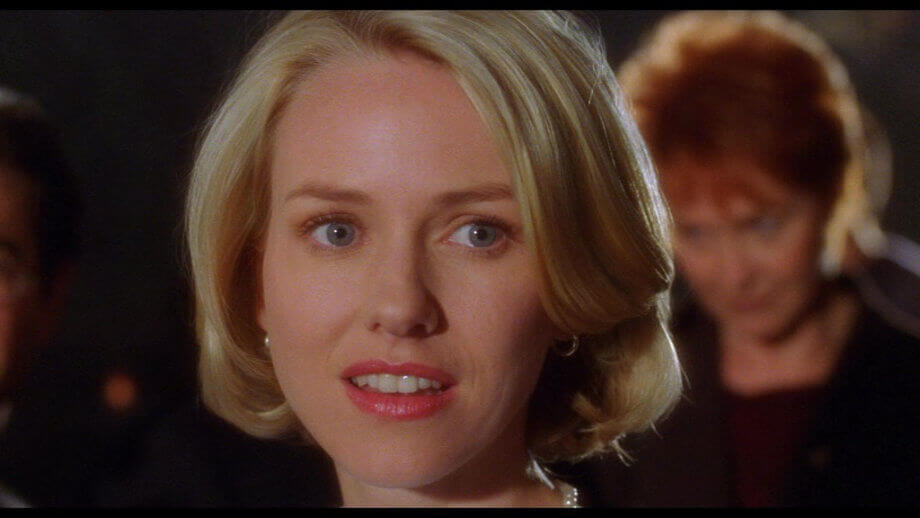
Betty appears to be the manifestation of the Persona archetype. It is, therefore, no coincidence that Betty looks like Diane herself.
As alluded above, the Persona is one of the most important archetypes we possess, and it is through its influence that we present ourselves to other people. So, Betty is a manifestation of how Diane would like the relationship with Camilla to be like. Diane wishes to be the talented actress and having a dependent Camilla to care for – this is the mask (Persona) she also wants others to see, and how it is revealed to us in her dream.
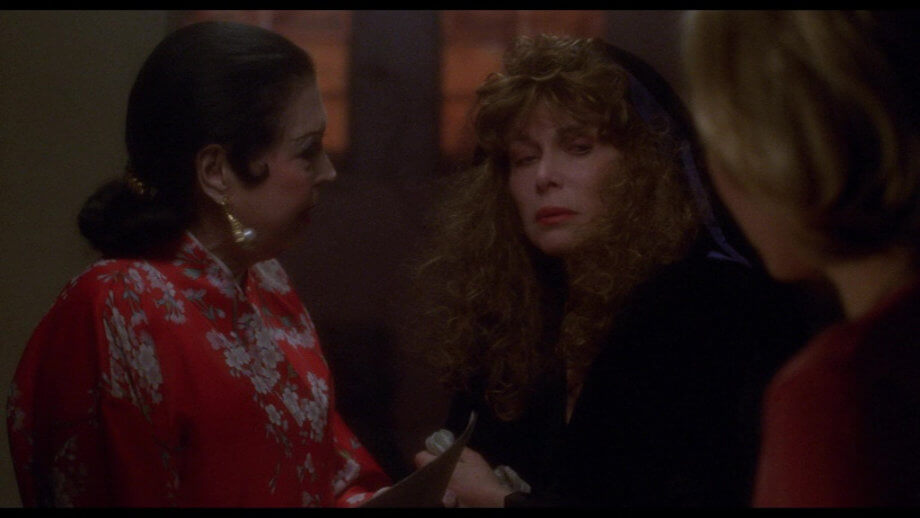
There is a clue to suggest that Betty may represent this mask, which, again, is not her true self. When lady Louise Bonner knocks on Betty’s door and the two start conversing, Betty says at some point “My name’s Betty” to which Louise replies dismissively “No, it’s not. Someone is in trouble! Something bad is happening”.
I see this scene as an unconscious message, alerting Diane that “Betty” (i.e., Diane’s Persona) is simply a facade which needs to be disintegrated. Remember, the Persona isn’t really you, it’s a mask you concoct to conceal your true nature.
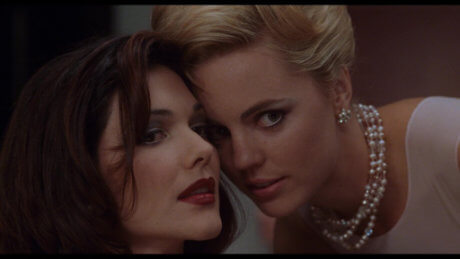
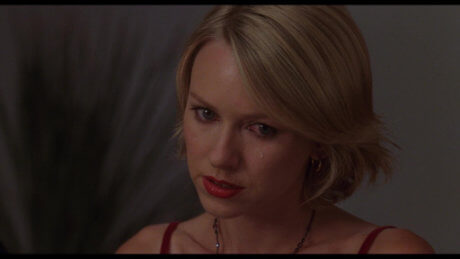
Diane may in fact (unconsciously) resent Camilla for the humiliation that she apparently has been enduring. For example, Diane mentions at the dinner party that once a film director didn’t think too much of her and favored Camilla over her for a role in a film that Diane was particularly fond of. Camilla also teasingly kisses the blonde woman at the party to perhaps purposely inflame Diane with jealousy.
The problem is that Diane might be over-identifying with her Persona – people with an under-developed ego may conflate their ego with their Persona. Diane’s whole world revolves around Camilla; Diane appears devoted to her.
But when Diane finally realizes that her love towards Camilla will never be reciprocated, her whole world crumbles and Diane becomes neurotic. All the subconscious hatred for Camilla surfaces and is projected to mysterious characters in Diane’s dream that want to hurt Rita.
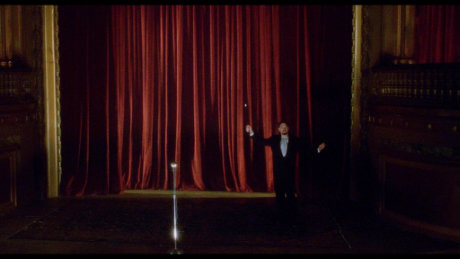
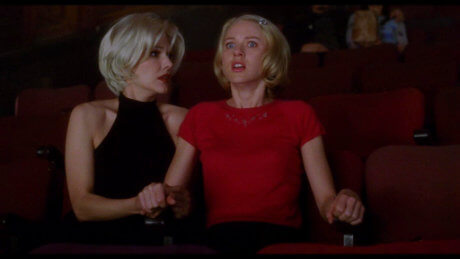
Now, the theater and the Magician host warrants a few words.
The Magician archetype is one of the most interesting archetypes that exist – but it is also one of the most confusing.
The reason for this is that the Magician archetype shares many characteristics with several other archetypes like the Sage, Trickster, Healer, Innocent, and more.
In fact, you can think of the Magician as a conflation of these different archetypes, and it’s this interaction among archetypes that determines the qualities of the Magician.
Generally speaking, however, the Magician archetype is associated with mental agility (e.g., imagination, deep thinking, intelligence) as well as with intuition and insight.
As with all archetypes, the Magician can take both a positive (balanced) and a negative (under- or over-developed) form.
Positive Magician
If you possess a positive Magician, then you will be a person who has a highly inquisitive mind and thinks deeply. For example, you will be an avid learner, and revel in the pursuit of knowledge. Artists and scientists, for example, draw their insights from the positive Magician.
You will be able to adapt well to novel, and often unexpected, situations. If an obstacle crosses your path, you stop and reassess, look for a solution from different angles, consider the long-term consequences, and, finally, take the most appropriate course of action.
The Magician archetype is very much linked to your inner world. You will be a person that relies heavily on your gut feeling.
In society, a person tapping into the positive Magician will use these skills for the benefit of others. For example, they will want to share their knowledge without strings attached. I find online discussion sites a good example where you can find these kind of Magicians – experts in diverse fields are willing to help strangers despite receiving little or nothing in return.
Negative Magician
The negative Magician employs tactics that alter people’s perceptions (such as creating illusions) of himself and/or of others.
People with a over-developed Magician can be manipulative. This type of person uses his/her powers of insight to gather information about the people they interact with.
Contrary to the positive Magician however, they will use this skill out of self-interest. Think of the manipulator in a love relationship who is able to turn an argument around (of which he/she is culpable), but end up making his/her partner feel guilty.
At the other end of the negative spectrum, a person with an under-developed Magician has a rigid way of thinking, and will not be very open-minded. They will show a general disinterest in the questions of life.
This type of person will also not listen to intuition, as they wouldn’t comprehend warnings from their inner world.
They will also tend to be more impulsive and will have difficulties seeing the long-term repercussions of their actions (due to a lesser ability to use insight and intuition).
Balancing your Magician
Ideally, everyone should aim at developing a positive/balanced Magician. However, it is more likely that most of us possess a combination of some positive and some negative traits of the Magician.
The key, according to Jung, is to work on those aspects of ourselves that are not yet developed, and to try to bring them to a balanced state.
I think the presence of the Magician at the last stage of Diane’s dream is telling. Note how he keeps going on about everything being just an illusion and what-not.
What is he talking about?
Most people interpret this scene as yet another clue that nothing that is happening in the movie up to this point is real; that everything is simply a product of Diane’s imagination (or dreaming).
But perhaps there is a deeper meaning to that.
The few scenes we witness of Diane and Camilla’s relationship show a somewhat cruel Camilla that blatantly induces jealousy in Diane (e.g., ensuring Diane is looking when Camilla and Adam make out in the car), tries to reconcile (e.g., inviting her to the dinner party), only to engage in the same jealousy tactic all over again (e.g., kissing the blonde woman at the dinner party).
So, one possibility could be that the dream is attempting to let Diane know that she is being manipulated by Camilla, that Diane’s perception of their love relationship is nothing but an illusion.
The phrase “No hay banda” (there is no band) used by the magician could be a metaphor for “there is nothing there (i.e., no love)”, even if Diane wishfully thinks so (as the magician says: “Yet, we hear a band”).
Note how there seems to be a battle between the Magician and Betty. Only Betty’s chair shakes during the simulated tempest, clearly indicating that the whole theater scene is about Diane (who looks exactly like Betty). The fumes that emerge shortly after, appear to be a premonition of Diane’s death, as they resemble the fumes that appear after Diane’s suicide at the end of the movie.
Moreover, the melancholic song by the singer Rebekah Del Rio is a clear portrayal of Betty’s relationship with Camilla. As mentioned above, Camilla’s rejection was the tipping point to Betty’s breakdown, which is represented by the collapse of the singer.
So the dream theater scene is all about the relationship between Diane and Camilla. Diane’s unconscious is warning Diane that she needs to come to terms with her feelings towards an insincere Camilla, as this relationship is causing her to breakdown psychologically (remember, according to Jung, dreams are a tool the unconscious uses to inform you where imbalances in your psyche lie).
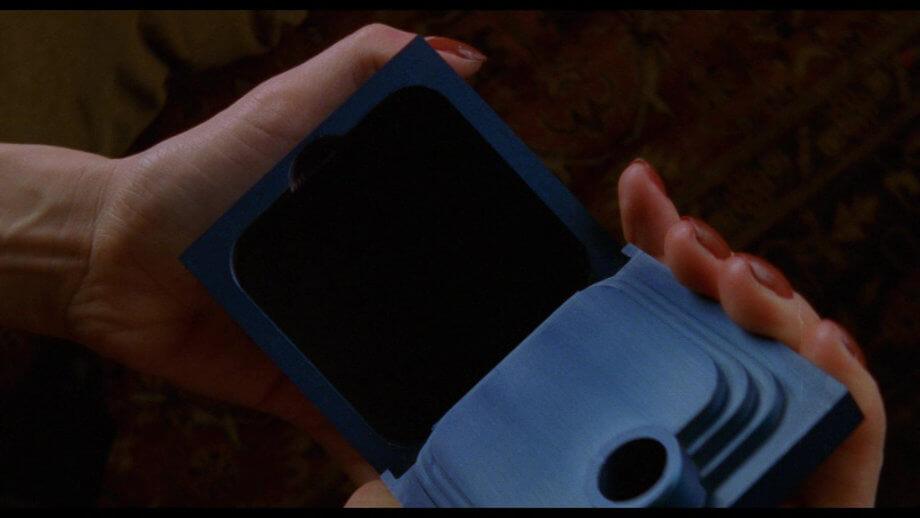
What’s more, when Camilla and Betty return home, Camilla calls for Betty who is nowhere to be seen. Betty vanishes leaving Rita alone to open the box, which seems to engulf her into darkness, at which point, a very disoriented Diane wakes up.
Could this scene symbolize the disintegration of the Persona/ego, perhaps triggering the psychotic episode that leads to Diane’s suicide?
Indeed, psychosis, according to Jung, occurs when the ego is too weak and loses control, letting unconscious contents flood the mind unabated.
Again, Diane’s over-identification with her Persona means that the Persona and ego are identical, and this causes her to neglect her true self. Diane’s realization of Camilla’s unrequited love, shatters her whole world.
With the dissolution of the Persona/ego, she falls prey to the dark side (the unconscious contents), which, in the movie, is represented by the submerging into the box.
One last thing about Diane/Betty. Post-Jungian psychoanalysts now believe that a damaged ego might come about due to a psychological wound from early childhood, perhaps as a consequence of not being accepted for who they really are (and, so, the need to behave in a way that is more acceptable to our parents or caregivers).
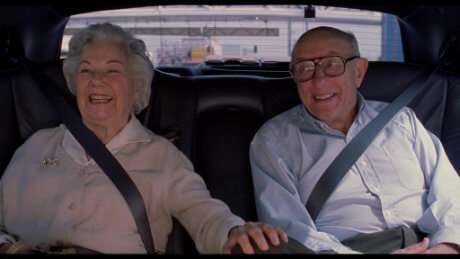
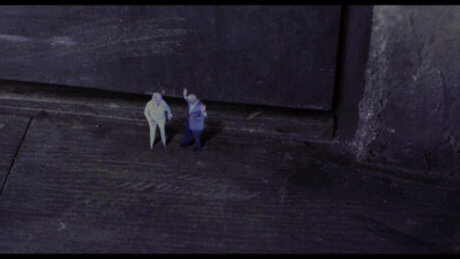
Close to the end of the film, Diane appears to suffer from paranoia and begins to have persecution hallucinations with the elderly couple that we see arriving with Diane at the beginning of the dream.
The contribution of the elderly couple, which is introduced in the film as being fellow passengers on the flight to L.A., is minimal and restricted to those initial and final scenes. However, the fact that they are the catalyst for Diane’s suicide, suggests that they likely played a critical role in Diane’s life.
My interpretation is that the elderly couple represents some parental figures (e.g., parents or grandparents), who, in reality, could have been critical, oppressive or even abusive towards her. In the dream, the elderly couple was displaced to the less emotional figures of fellow passengers that she has just met. Displacement is a common defense mechanism, according to psychoanalysts, in which a person that provoke anxiety is replaced by someone/something else that is less emotion-laden.
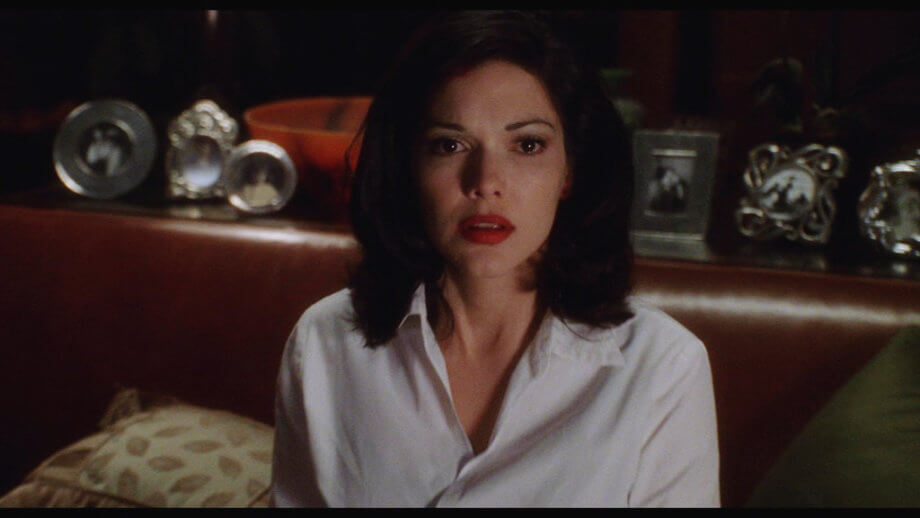
Recall the beginning scene when the limousine grinds to a halt and Rita addresses the chauffeur by saying “What are you doing? We don’t stop here.”.
Well, Diane is driven to the dinner party by the same chauffeur in that exact limousine (number plates are the same). What is more, when the limousine stops, Diane says the very same thing to the chauffeur that Rita said, and on the very same seat Rita was seating. This may suggest that Rita is another aspect of Diane’s personality.
Specifically, in the Jungian sense, Rita appears to represent the Shadow part of Diane’s personality. Remember that the Shadow contains not only all negative emotions and desires, but also weaknesses which may not fit into the ‘toughness’ that a person wants to incorporate into their Persona.
Rita is fragile, naive, insecure, needy – all unwanted traits that Diane would deem negative and does not accept as her own. Jung, in fact, believed that when we deny the Shadow of our psyche, we tend to project it to others (this is called Shadow projection).
So Rita is a projection of Diane’s own insecurities and shortcomings as a person. There is no one better to project those negative traits than to Camilla, as Diane feels humiliated and controlled by her.
Also, note how Rita is almost always wearing black – the Shadow archetype tends to show as a dark figure in dreams.
It is also interesting that Rita suffers from amnesia, which could represent repressed, unconscious traits stored in the Shadow.
The Shadow archetype in your dream tends to be someone you dislike in real life – well, Diane hires a hitman to assassinate Rita (!), so that pretty much ticks the box.
Jung believed that we must face the Shadow. Only then can the individual reintegrate it (learn to live with them) and find a balance between the Persona and Shadow.
I believe that Betty and Rita’s relationship is another desperate message of the unconscious that Diane needs to face her own Shadow, or else risk a psychological breakdown.
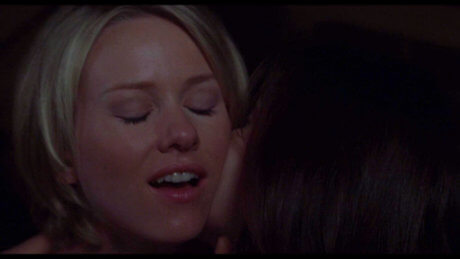
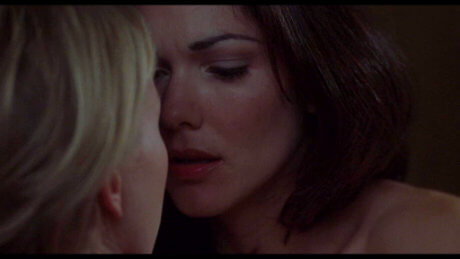
Consider the love scene. One interpretation could be that perhaps the psyche is telling Diane that she needs to come to terms with her Shadow (negative aspects of herself).
However, this process of Shadow integration seems to fail tremendously. Remember when Betty says she is in love with Rita, but Rita looks taken aback and does not say she loves Betty back.
I have always wondered what this could mean, and my interpretation is that the Shadow work has simply failed, and Diane has not managed to come to terms with her own repressed negative traits.
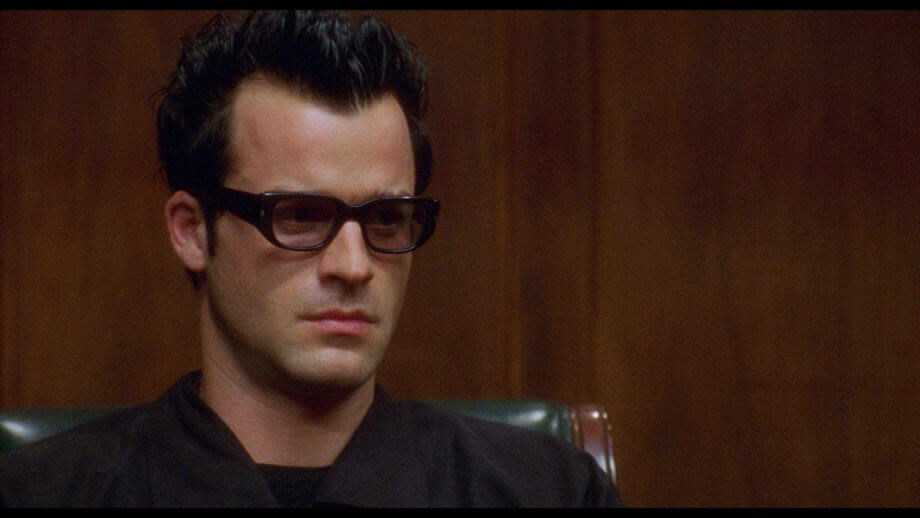
Dream-character Adam is a tough one to figure out. It appears that dream-character Adam inherited some of Diane’s misfortunes.
In the dream, Adam is humiliated by his wife; he eventually gets broke as his credit cards are cancelled; his job hangs on the line; he feels emasculated and capitulate to the demands of an unnamed Organization to make a certain “Camilla Rhodes” the lead actress in one of his films.
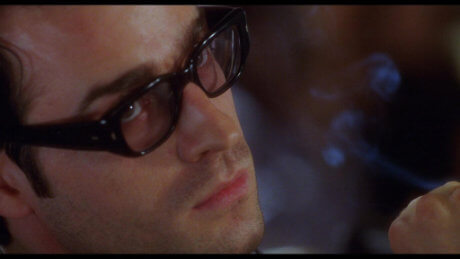
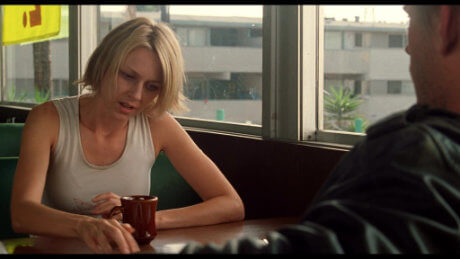
Adam soon realises that he has no control over this decision and is forced to say “This is the girl”. When Diane meets the hitman and shows him a photo of Camilla, she also tells him: “This is the girl”, suggesting that dream-character Adam might be another aspect of Diane’s psyche.
It is interesting that the dream-character Adam has to pick an actress called “Camilla Rhodes”. Once again, we are witnessing what psychoanalysts call displacement – that is, Diane’s wish of killing Camilla is being displaced by something less emotionally-laden – that of selecting a certain Camilla Rhodes for the main role in Adam’s film.
Fair enough, but what does Adam represent then? Perhaps Adam is another part of Diane’s Shadow – whereas Diane is projecting feelings of insecurity and fear onto Rita, Adam is that part of Diane’s personality which is submissive.
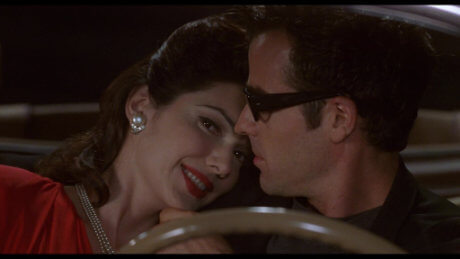
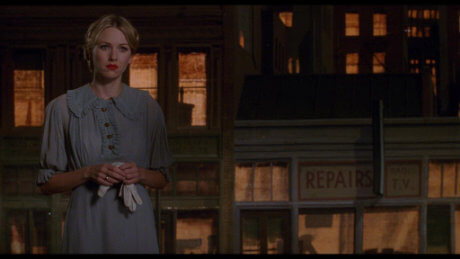
The limited scenes we see of Diane’s real life, show a somehow clingy Diane, who is incapable of standing up for herself – for example, when Camila and Adam make out in the car and Diane observes, or, at the party, when she appears to be laughed at by Adam and Camila.
So this attitude of being unable to stand up for herself is projected onto Adam, who in the dream is incapable of confronting the Organization, and succumbs to their wishes. Note how Rita and Adam never meet in the dream, it is as if Diane needs to come to terms to two separate aspects of her own Shadow…

Now, the unnamed Organization is composed of different male figures: the men at the meeting with Adam (the Castigliane brothers), Mr. Roque, the Cowboy, the mobsters and the hitman.
However, it appears that these characters are all unrelated as far as Diane’s reality is concerned. Diane sights the Castigliane brother and the Cowboy at the dinner party but they do not seem to be related. Also, the encounter with the hitman happens at Winkie’s, on the day after the dinner party, and nothing indicates that he is related with the other two.
However, in the dream, these people are brought together in the form of the unnamed Organization, which has an autocratic influence over the casting process of Adam’s movie.
Diane’s brain is using these unrelated events that occurred prior to the dream, linking them into a sort-of coherent dream story (not atypical of dreams).
Speculatively, there could be a hidden message in the Adam/Organization dream story.
Maybe Diane is convinced that Camilla and Adam are conniving with Hollywood powers. Or perhaps that they are themselves major players in this whole biased casting affair, which she fell victim of.
The absurd dream episode in which the Organization is forcing Adam into casting the girl could reflect Diane’s unconscious belief about the irrationality of Hollywood’s casting decisions, which might have contributed to her decision in having Camilla assassinated.
It’s no coincidence that Adam is forced to “cast” a certain Camilla Rhodes, which just happens to be the name of Diane’s love interest Camilla.
Again we are seeing text-book displacement at work here (remember, displacement is an aspect of the dream-work in that strong emotions associated with a significant person/object/idea in the dreamer’s life are rerouted to a less emotionally-charged person/object/idea in the dream).
Diane wishes Camilla dead but this thought is so disturbing that her brain replaces it with a more innocuous one: the process of casting an actress for a film.
Now, what archetype might the Organization represent?
My interpretation here is that the Organization symbolizes the Animus in Diane’s psyche.
The Organization is bullying and aggressive in its methods, which suggests that the Animus is manifesting itself negatively. Indeed, the negative Animus is likely to strike when some significant event shakes the woman (perhaps the realization that Diane is responsible for Camilla’s death).
When a woman identifies with the negative criticism from the Animus (Animus possession), the Animus tends to appear as a group of threatening male figures, that criticize, harass, humiliate and instill fear in the woman – all tactics employed by the unnamed Organization on Adam in the dream (and, remember, dream-Adam is part of Diane’s psyche).
Animus possession is possibly represented by Adam hiring Camilla Rhodes. When Adam says “This is the girl!”, a man who appears to be working for the unnamed Organization creeps from behind and nods his approval. This reveals that Diane succumbed to the negative Animus, which managed to retain its influence upon her life (also check out this forum thread where Diane’s Animus is discussed in greater detail).
Jung believed that psychological disturbance occurs when the unconscious mind is trying to make us aware of something in ourselves that we refuse to address. If we work with what our unconscious is telling us, we might stand a chance at integrating these not-yet-expressed aspects of ourselves and, hence, be more complete.
Dreams are a tool that the unconscious uses to tell you where you need to adjust your behavior, and it does this by summoning archetypal images. I see Diane’s dream as a desperate and, ultimately, futile attempt of the unconscious mind to warn her that she needs to work on developing her ego, and come to terms with her deepest, unconscious issues (her Shadow and negative Animus).
Fueled by constant humiliation from Camilla and Adam, coupled with a problematic upbringing (the reason for her weak ego), Diane’s unconscious is brimmed with rage and self-pity.
These negative emotions got projected onto the images of Camilla and Adam, whom she blames for her misery. This projection is never acknowledged (i.e., she never accepts her Shadow as an aspect of herself), and she is probably convinced that she is the victim.
Enticed by a harassing Animus (unnamed organization), unconscious material flood Diane’s mind, stealing her own identity (ego/Persona).
With the dissolution of the ego/Persona, there is nothing to hold her on to reality, and Diane becomes delusional as she succumbs to the contents of the unconscious.
Perhaps you feel the Jungian dream interpretation is spot on. Or perhaps you feel it is unduly far-fetched or even simplistic.
In either case, I will end this article by noting that Jung believed that the psyche has a reservoir of energy, which could be channelled into many areas of gratification, including creative and artistic activities.
He saw the creative/artistic process as influences from the personal and collective unconscious, guiding the artist not unlike a marionette.
So, perhaps the Jungian dream interpretation of the film makes sense not because David Lynch deliberately associated an archetypal image to each main character in the film, but simply because archetypal images were unconsciously evoked and incorporated into his work.
In a way, every film could be construed as the expression of the author’s unconscious. If the artist welcomes these unconscious impulses when producing an artistic work, the finished product will have tapped into the collective unconscious that we all share, and, in this way, will enable us to get a little bit closer to the artist’s mind.
See you in the next article!
Most of my research was done online where I picked up a few things here and there. However, the material below helped me greatly.
Books
Snowden, Ruth. Jung: The Key Ideas. From analytical psychology and dreams to the collective unconscious and more. Teach Yourself.
Gross, Phil. Jung: A complete introduction. Teach Yourself.
Youtube
Leave a comment
Add Your Recommendations
Popular Tags